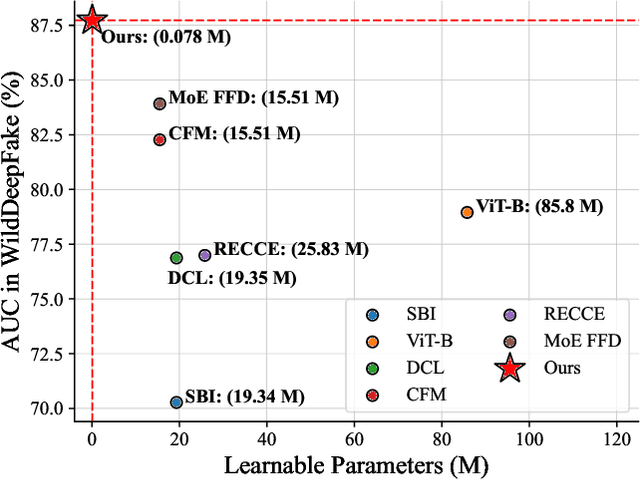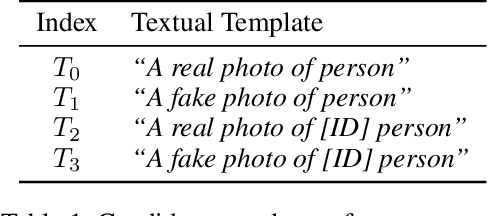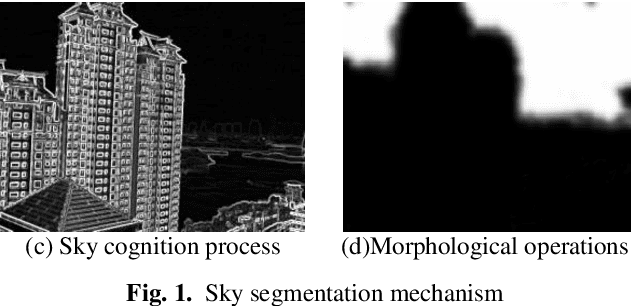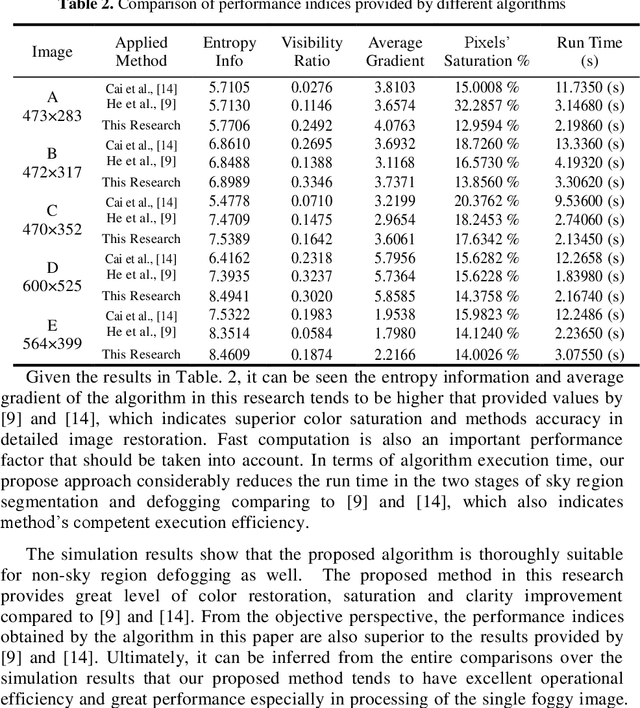Weixiang Li
Standing on the Shoulders of Giants: Reprogramming Visual-Language Model for General Deepfake Detection
Sep 04, 2024



Abstract:The proliferation of deepfake faces poses huge potential negative impacts on our daily lives. Despite substantial advancements in deepfake detection over these years, the generalizability of existing methods against forgeries from unseen datasets or created by emerging generative models remains constrained. In this paper, inspired by the zero-shot advantages of Vision-Language Models (VLMs), we propose a novel approach that repurposes a well-trained VLM for general deepfake detection. Motivated by the model reprogramming paradigm that manipulates the model prediction via data perturbations, our method can reprogram a pretrained VLM model (e.g., CLIP) solely based on manipulating its input without tuning the inner parameters. Furthermore, we insert a pseudo-word guided by facial identity into the text prompt. Extensive experiments on several popular benchmarks demonstrate that (1) the cross-dataset and cross-manipulation performances of deepfake detection can be significantly and consistently improved (e.g., over 88% AUC in cross-dataset setting from FF++ to WildDeepfake) using a pre-trained CLIP model with our proposed reprogramming method; (2) our superior performances are at less cost of trainable parameters, making it a promising approach for real-world applications.
Single Image Dehazing Algorithm Based on Sky Region Segmentation
Jul 10, 2020



Abstract:In this paper a hybrid image defogging approach based on region segmentation is proposed to address the dark channel priori algorithm's shortcomings in de-fogging the sky regions. The preliminary stage of the proposed approach focuses on the segmentation of sky and non-sky regions in a foggy image taking the advantageous of Meanshift and edge detection with embedded confidence. In the second stage, an improved dark channel priori algorithm is employed to defog the non-sky region. Ultimately, the sky area is processed by DehazeNet algorithm, which relies on deep learning Convolutional Neural Networks. The simulation results show that the proposed hybrid approach in this research addresses the problem of color distortion associated with sky regions in foggy images. The approach greatly improves the image quality indices including entropy information, visibility ratio of the edges, average gradient, and the saturation percentage with a very fast computation time, which is a good indication of the excellent performance of this model.
 Add to Chrome
Add to Chrome Add to Firefox
Add to Firefox Add to Edge
Add to Edge